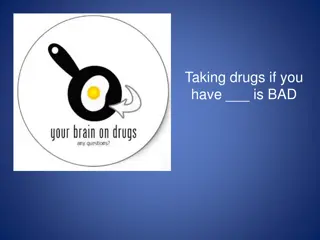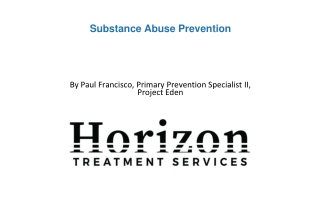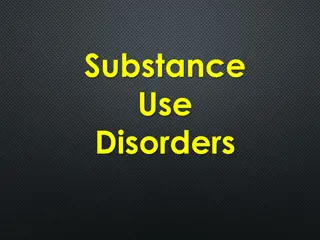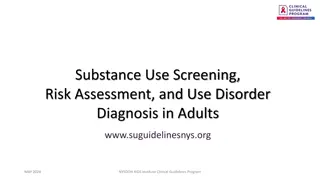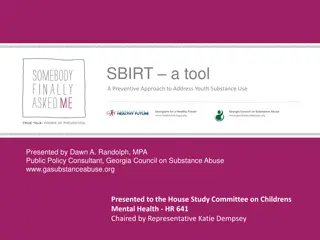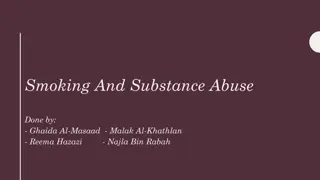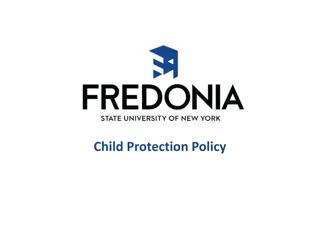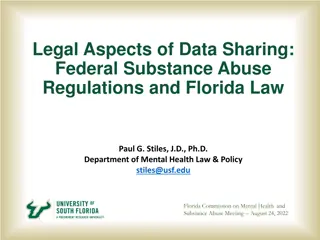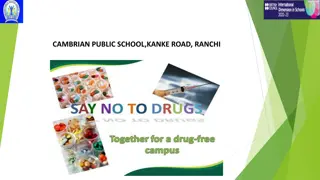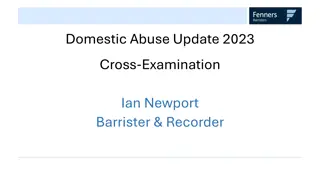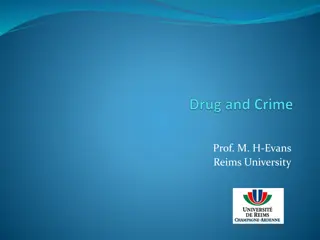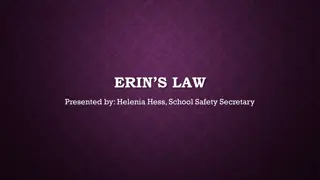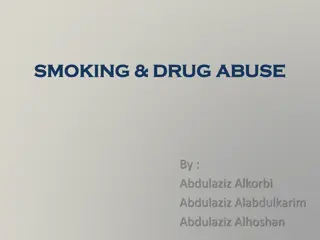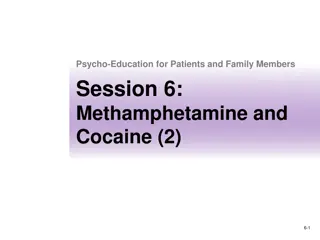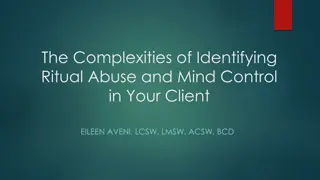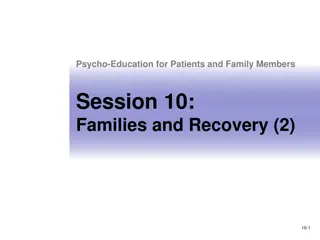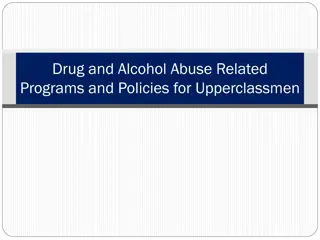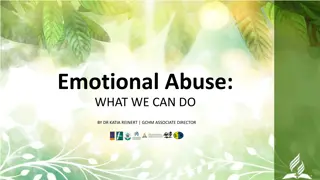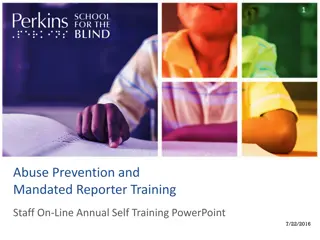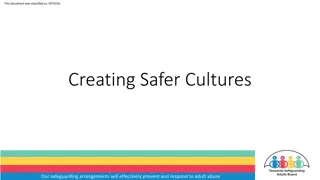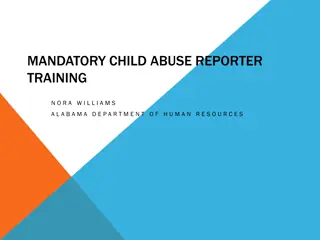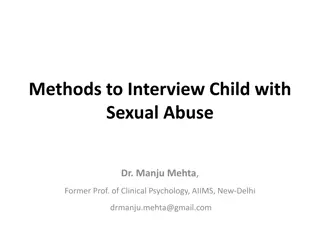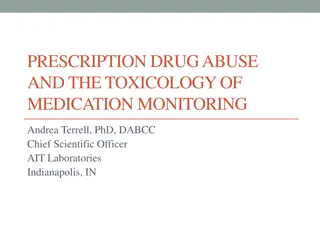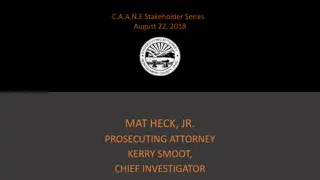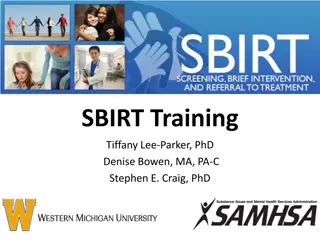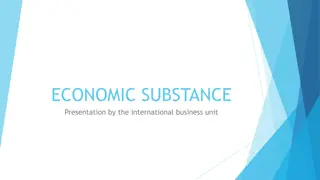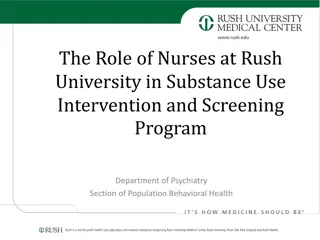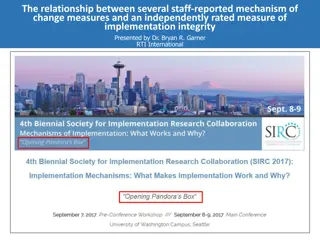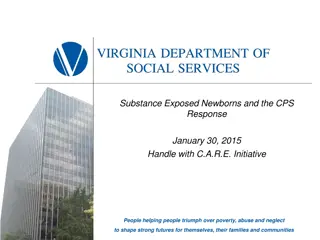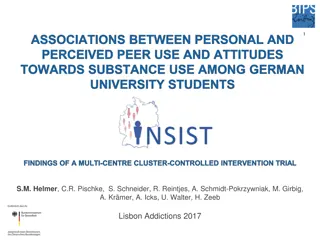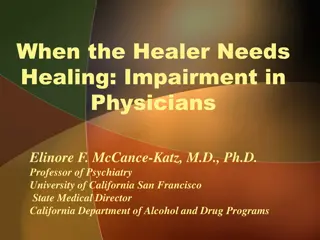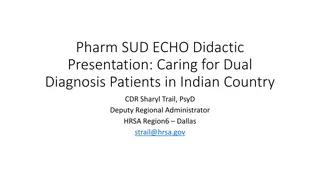Understanding Substance Abuse: Key Terms and Symptoms
Learn essential terms related to substance abuse, including addiction, dependence, controlled substances, designer drugs, and tolerance. Explore the schedules of controlled drugs and recognize signs of overdose and withdrawal for commonly abused substances. Enhance your awareness of substance abuse issues and their implications.
Download Presentation

Please find below an Image/Link to download the presentation.
The content on the website is provided AS IS for your information and personal use only. It may not be sold, licensed, or shared on other websites without obtaining consent from the author. Download presentation by click this link. If you encounter any issues during the download, it is possible that the publisher has removed the file from their server.
E N D
Presentation Transcript
High-Yield Terms to Learn Abstinence syndrome A term used to describe the signs and symptoms that occur on of a drug in a dependent person withdrawal Addiction Compulsive drug-using behavior in which the person uses the drug for personal satisfaction, often in the face of known risks to health; formerly termed psychological dependence Controlled substance A drug deemed to have abuse liability that is listed on governmental Schedules of Controlled Substances.aSuch schedules categorize illicit drugs, control prescribing practices, and mandate penalties for illegal possession, manufacture, and sale of listed drugs. Controlled substance schedules are presumed to reflect current attitudes toward substance abuse; therefore, which drugs are regulated depends on a social judgment Dependence A state characterized by signs and symptoms, frequently the opposite of those caused by a drug, when it is withdrawn from chronic use or when the dose is abruptly lowered; formerly termed physical or physiologic dependence Designer drug A synthetic derivative of a drug, with slightly modified structure but no major change in pharmacodynamic action. Circumvention of the Schedules of Controlled Drugs is a motivation for the illicit synthesis of designer drugs Tolerance A decreased response to a drug, necessitating larger doses to achieve the same effect. This can result from increased disposition of the drug (metabolic tolerance), an ability to compensate for the effects of a drug (behavioral tolerance), or changes in receptor or effector systems involved in drug actions (functional tolerance)
Schedules of controlled drugs.a I :No medical use; high addiction potential, Flunitrazepam, heroin, LSD, mescaline, PCP, MDA, MDMA, STP II: Medical use; high addiction potential, barbiturates, strong opioids Amphetamines, cocaine, methylphenidate, short acting III: Medical use; moderate abuse potential moderate, opioid agonists Anabolic steroids, barbiturates, dronabinol, ketamine IV :Medical use; low abuse potential, Benzodiazepines, chloral hydrate, mild stimulants (eg, phentermine, sibutramine), most hypnotics (eg, zaleplon, zolpidem), weak opioids
Signs and symptoms of overdose and withdrawal from selected drugs of abuse. Amphetamines, methylphenidate, cocainea Agitation, hypertension, tachycardia, delusions, hallucinations, hyperthermia, seizures, death Apathy, irritability, increased sleep time, disorientation, depression Barbiturates, benzodiazepines, ethanolb Slurred speech, "drunken" behavior, dilated pupils, weak and rapid pulse, clammy skin, shallow respiration, coma, death Anxiety, insomnia, delirium, tremors, seizures, death Heroin, other strong opioids Constricted pupils, clammy skin, nausea, drowsiness, respiratory depression, coma, death Nausea, chills, cramps, lacrimation, rhinorrhea, yawning, hyperpnea, tremor
Checklist When you complete this chapter, you should be able to: Identify the major drugs that are commonly abused. Describe the signs and symptoms of overdose with, and withdrawal from, CNS stimulants, opioid analgesics, and sedative-hypnotics, including ethanol. Describe the general principles of the management of overdose of commonly abused drugs. Identify the most likely causes of death from commonly abused drugs.
A very agitated young male was brought to the emergency room by the police. Psychiatric examination revealed that he had snorted cocaine several times in the past few days, the last time being 10 hours previously. He was given a drug that sedated him, and he fell asleep. The drug that was used to counter this patient's apparent cocaine wihdrawal was very likely: A. Phenobarbital. B. Lorazepam. C. Cocaine. D. Hydroxyzine. E. Fluoxetine.


